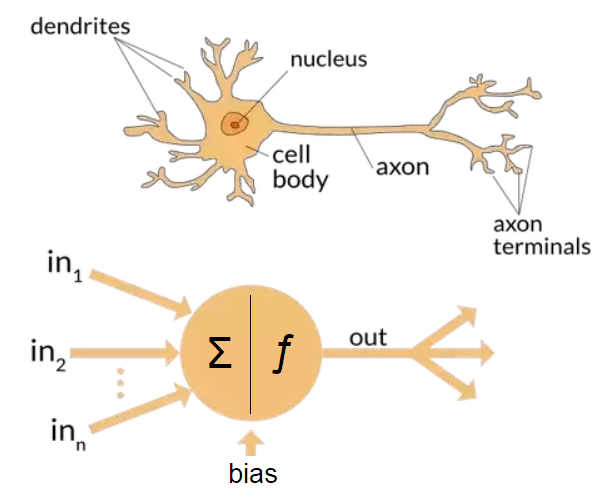According to our current studies, AI has advanced to the point where tasks are performed much more efficiently than we can ourselves. With this comes ground-breaking innovations in various fields of expertise, allowing more streamlining of tasks. But to understand why we have chosen AI over humans we must understand what aspects of the artificial and biological are the same and what differs.
Similarities:

ANN goes back as early as the 1950s, an example being the creation of perceptrons. The idea behind perceptrons was to emulate what we thought the BNN does in our brains. In the biological neural network, dendrites receive signals from other cell bodies which they use the nucleus to process and send out to others with the help of axons. The link between one nucleus and others can vary, leading to the storage of information (i.e. memory) and the creation of new neural links. What happens during the processing stage in the nucleus still remains uncertain, however, the ANN also tries its best to mimic the workings. The ANN also receives inputs and uses its hidden layer to process information and send out the results. However, unlike the biological neural network, the ANN is a mathematical model with changing parameters and functions to calculate whatever it is that we require of it.
Differences:
We have over 86 billion neurons in our brain creating and over 100 trillion synapses (links) while ANN consists of a number much smaller. In terms of speed of operations, the neurons in a human brain can vary widely due to aspects such as age, gender, how much they got the night before, etc. It is much easier for the ANN to stay consistent in its calculations. However, it is important to understand that consistency comes from the specialization of ANN. An example being an ANN designed to play chess wouldn’t be able to play checkers unless designed to.
Conclusion:
I have no doubt whatsoever that AI and ANN will be developed to be adaptable to any circumstances just like in sci-fi films. The most important aspect that comes to mind is how the job market will shift in the AI revolution to come. Trucks with AI are already being tested and dispatched while medical facilities are filled with AI that can notice cancer cells much more faster and accurately than the human eye. Even home caretakers are being slowly replaced with systems such as smart homes with Amazons Alexa and Siri. From my understanding, AI can only replace us with what we already know, with information that we already have uncovered. In other words, I believe that the job market will shift towards seeing a demand in human-to-human interactions more than anything else.
Sources:
https://www.quora.com/What-is-the-differences-between-artificial-neural-network-computer-science-and-biological-neural-network
https://towardsdatascience.com/the-differences-between-artificial-and-biological-neural-networks-a8b46db828b7